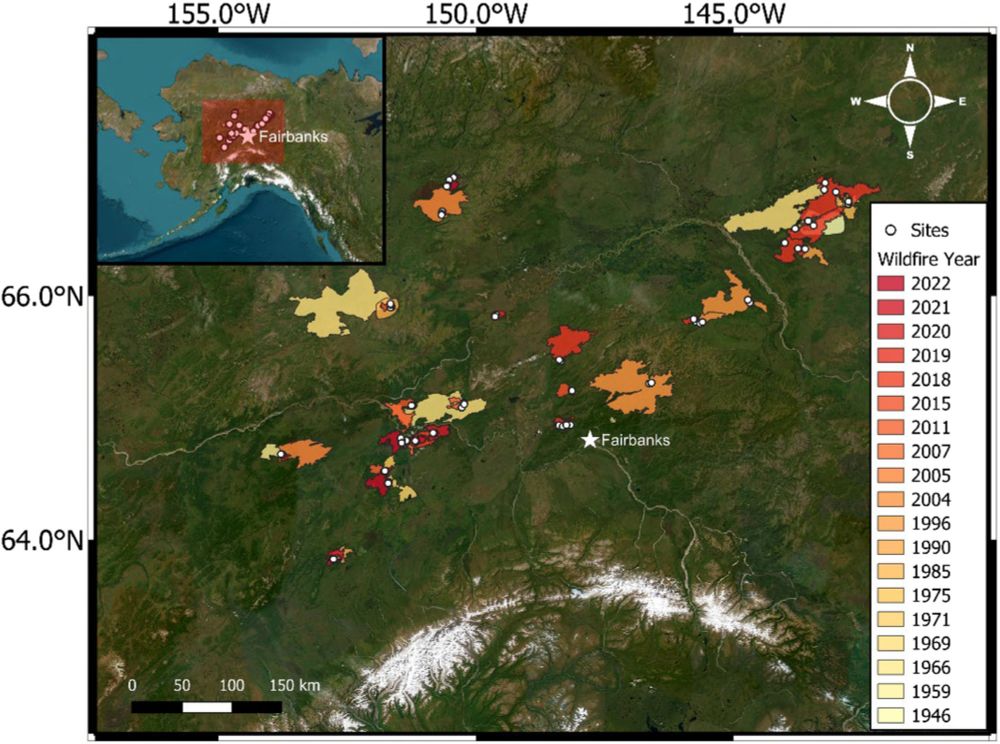Professor, University of Wisconsin-Madison; Co-editor in Chief of Ecosystems; works on forest ecology, fire ecology, disturbance dynamics, working landscapes, ecosystem services, ecosystem modeling. Likes biking, hiking and classical music. .. more
Professor, University of Wisconsin-Madison; Co-editor in Chief of Ecosystems; works on forest ecology, fire ecology, disturbance dynamics, working landscapes, ecosystem services, ecosystem modeling. Likes biking, hiking and classical music.
Monica G. Turner is an American ecologist known for her work at Yellowstone National Park since the large fires of 1988. She is currently the Eugene P. Odum Professor of Ecology at the University of Wisconsin–Madison. .. more
#logging #ClimateChange #ForestFire

Reposted by Monica G. Turner, Juli G. Pausas

#logging #ClimateChange #ForestFire
Reposted by Monica G. Turner

Reposted by Monica G. Turner, Ben Bond‐Lamberty, Carly D. Ziter
Figured I'd ask if anyone had suggestions or strong feelings about what to get!
🧪🌎🌳🍁
@sgradywelsh.bsky.social (lab manager) would greatly appreciate any input!
Reposted by Monica G. Turner
Did you see where the President of Iran announced that the drought there is so bad that if they don't get any rain in the next two months they'll run out of water and *evacuate Tehran*?


Reposted by Monica G. Turner, Mary L. Dudziak, Andrew Baillie

Now, researchers may have identified the worrisome mechanisms behind it.
Within the Future Forests excellence cluster, we are hiring two modellers for 7 year (!) positions here in Freiburg.
A scientific coordinator role: uni-freiburg.de/en/job/00004...
And and a scientific programmer role: uni-freiburg.de/en/job/00004...
Reposted by Monica G. Turner

#Biodiversity #Woodpecker #DeadWood
Reposted by Monica G. Turner

Reposted by Michael E. Mann, Joanna Bryson, Brian J. Enquist , and 11 more Michael E. Mann, Joanna Bryson, Brian J. Enquist, Monica G. Turner, Ian J. Wright, Anthony Ricciardi, Pieter A. Zuidema, Randall A. Kramer, Dana R. Fisher, James Connelly, Tim Stephens, Andrea Santangeli, Julen Astigarraga, Olivier Villemaire-Côté
📄Simulated postfire tree regeneration suggests reorganization of Greater Yellowstone forests during the 21st century
doi.org/10.1002/ecs2...

Reposted by Monica G. Turner, Brian J. Harvey

📄Simulated postfire tree regeneration suggests reorganization of Greater Yellowstone forests during the 21st century
doi.org/10.1002/ecs2...
Reposted by Monica G. Turner

Learn more: https://scim.ag/4nhTQJa
Reposted by Monica G. Turner, Silvia Secchi, Michael B. Mahon

via @eenews.bsky.social

Reposted by Brian J. Harvey

Reposted by Monica G. Turner, Brian J. Harvey, Christina Dollinger

Reposted by Monica G. Turner, Ben Bond‐Lamberty


unc.peopleadmin.com/postings/307...
Reposted by Kevin J. Anchukaitis

Reposted by Monica G. Turner


Reposted by Monica G. Turner, Leo Lucassen

Quantify traits of tree species across the western US to determine how tree populations and forest communities will respond to drought and fire.
plant-traits.net/lab-openings/
Reposted by Monica G. Turner, Ankur R. Desai

Reposted by Monica G. Turner, Ben Bond‐Lamberty


